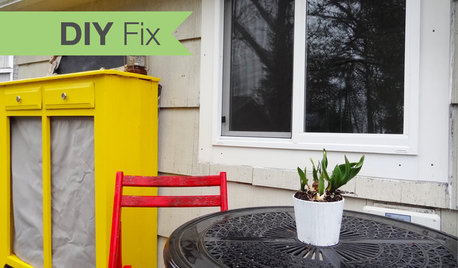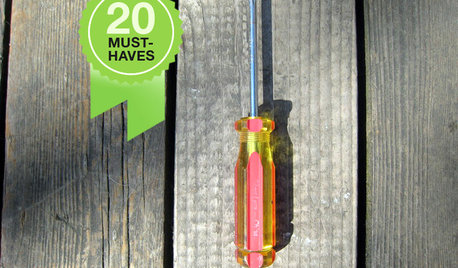Repair or Replace Asko W6021?
asko_buyer
11 years ago
Related Stories

REMODELING GUIDESReplace vs. Restore: The Great Window Debate
Deciding what to do with windows in disrepair isn't easy. This insight on the pros and cons of window replacement or restoration can help
Full Story
Replace Your Windows and Save Money — a How-to Guide
Reduce drafts to lower heating bills by swapping out old panes for new, in this DIY project for handy homeowners
Full Story
SELLING YOUR HOUSEFix It or Not? What to Know When Prepping Your Home for Sale
Find out whether a repair is worth making before you put your house on the market
Full Story
HOUSEKEEPING20 Tools Every Homeowner Should Have
You probably have a hammer, but that's just a start. These 20 tools and devices are superstars for household projects and repairs
Full Story
FLOORS10 Ways to Make the Most of Your Home’s Original Floors
Save yourself the cost of replacing your old floorboards with these tips for a new finish
Full Story
LIFESurprising Ways to Pare Down at Home
All those household items you take for granted? You might not need them after all. These lists can help you decide
Full Story
LIGHTINGWhat to Know About Switching to LED Lightbulbs
If you’ve been thinking about changing over to LEDs but aren't sure how to do it and which to buy, this story is for you
Full Story
GREAT HOME PROJECTSUpgrade Your Windows for Beauty, Comfort and Big Energy Savings
Bid drafts or stuffiness farewell and say hello to lower utility bills with new, energy-efficient windows
Full Story
KITCHEN MAKEOVERSSee a Kitchen Refresh for $11,000
Budget materials, some DIY spirit and a little help from a friend turn an impractical kitchen into a waterfront workhorse
Full Story
MOST POPULARBudget Decorator: Shop Your Home for a New Look
Redecorate without spending a cent by casting a creative eye on the showroom called home
Full StoryMore Discussions








ZoapBox
asko_buyerOriginal Author
Related Professionals
Buffalo Kitchen & Bathroom Designers · Carson Kitchen & Bathroom Designers · South Sioux City Kitchen & Bathroom Designers · Winchester Kitchen & Bathroom Remodelers · Tacoma Cabinets & Cabinetry · Canton Custom Closet Designers · West Valley City Custom Closet Designers · Orangevale Custom Closet Designers · Fort Lauderdale Flooring Contractors · Kansas City Flooring Contractors · Kirkland Flooring Contractors · Lewisville Flooring Contractors · Massapequa Flooring Contractors · Sarasota Flooring Contractors · Troy Flooring Contractorskaismom
relic
asko_buyerOriginal Author
sandy1616
asko_buyerOriginal Author
rococogurl
rococogurl